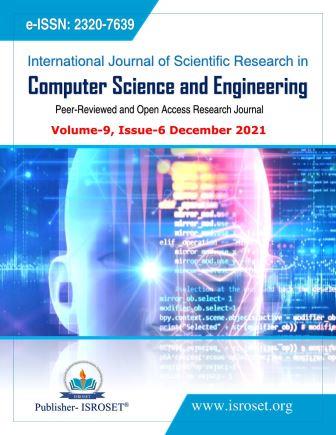Statistical Analysis of Effects of Fabric Thickness, Loop Shape Factor, Fabric Tightness Factor and Aerial Weight on Water Vapor Permeability of Single Jersey Polyester Knitted Fabric
Keywords:
Single jersey, fabric aerial weight, thickness, tightness factor, loop shape factor, water vapor permeability, BBDAbstract
on a daily basis, human being is subjected to different activities. Thus, generation of sweat will occur as the activities are carried out. This will make us uncomfortable. So as to minimize this problem the current research tries to analyze and correlate the effects of fabric thickness, loop shape factor, tightness factor, and fabric aerial weight on water vapor permeability of single jersey polyester knitted fabrics. For conducting the study, sample polyester knitted fabrics have been purchased from local market based on the differences of the stated factors. For statistical analysis, Design expert software version 11 is used. Following Box Behnken design (BBD), 30 experimental runs with 6 center points have been conducted. Accordingly, the experimental analysis shows fabric aerial weight, thickness, tightness factor and loop shape factor significantly affects water vapor permeability of the single jersey polyester knitted fabrics. In addition, the combined effect of fabric aerial weight & tightness factor and the interaction of thickness with tightness factor also affect water vapor permeability significantly. The developed 3D surface graph shows all the stated factors are having an inverse relation with the water vapor permeability behavior of polyester single jersey fabric. Using a confidence level of 95%, the actual versus predicted values are plotted showing the model is adequate and fitting. The calculated correlation coefficient between the actual and predicted value of water vapor permeability is 86.23%. For determination of an optimized water vapor permeability value of the fabrics, regression equation is developed on the basis of actual factors.
References
Yoon H & Buckley A, Improved comfort polyester part 1: Transport properties and thermal comfort of polyester/cotton blend fabrics, Text Res J, vol. 54, issue 5, pp. 289-298. 1984.
OGLAKCIOGLU N, CELIK P, UTE B, MARMARALI A & KADOGLU H, THERMAL COMFORT PROPERTIES OF ANGORA RABBIT/COTTON FIBER BLENDED KNITTED FABRICS, TEXT RES J, VOL. 79, ISSUE 10, PP. 888-894. 2009
Ozdil, N. & Anand, S. Recent developments in textile materials and products used for Active wear and Sport wear. Electron. J. Text. Technol. Vol. 8, pp. 68–83. 2014
Ashdown, S.P. Improving body movement comfort in apparel. In Improving Comfort in Clothing, 1st ed.; Song, G., Ed.; Wood head publishing Limited: Cambridge, UK,; pp. 278–302, ISBN 9781845695392. 2011
Nichols, D., Practical Recommendations for Endurance Cycling in Hot/Humid Conditions. ASPETAR Sports Med. J. 2016,
Sinclair, R. Textiles and Fashion: Materials, Design and Technology; Wood head Publishing Limited in Association with the Textile Institute: Cambridge, UK,; ISBN 9781845699314,2015.
Li, Y., Perceptions of temperature, moisture and comfort in clothing during environmental transients. Ergonomics vol. 48, pp. 234–248. 2005
Yi, K.F., Effect of Heat and Moisture Transfer Properties of T-Shirts on Comfort Sensations; the Hong Kong Polytechnic University: Hong Kong, China, 2006.
Theses, M. & Wigboldy, K., The Effects of a Moisture-Wicking Fabric Shirt on the Physiological Responses during Acute Exercise in the Heat; Western Michigan University: Kalamzoo, MI, USA, 2013.
Uttam, D., Active Sportswear Fabrics. Int. J. IT Eng. Appl. Sci. Res. vol. 2, pp. 34–40. 2013.
ESRA K, NALAN K, SUNAY O & BEHCET B, EFFECTS OF FIBER CROSS SECTIONAL SHAPE AND WEAVE PATTERN ON THERMAL COMFORT PROPERTIES OF POLYESTER WOVEN FABRICS, FIBRES & TEXT IN EASTERN EURPE, VOL. 92, ISSUE 3, PP. 67-72. 2012.
Mohamed Ghaith Chakroun, Sofien Benltoufa, Faten Fayala , The effect of fabric’s structure on the breathability and the drying rate properties , COMMUNICATIONS IN DEVELOPMENT AND ASSEMBLING OF TEXTILE PRODUCTS, Vol. 2 No. 1, pp. 61-69, 2021. DOI 10.25367/cdatp.2022.2.p61-69.
C.Prahsarn, R.L.Barker, B.S.Gupta, Moisture vapor transport behavior of polyester knit fabrics, Textile research journal, vol. 75 issue 4, pp. 346-351. 2005.
Li. Y., Zhu, Q.Y., & Yeung K. W., Influence of thickness and porosity on coupled heat and liquid moisture transfer in porous textiles. Text. Res. J., Vol. 72, pp. 435-446. 2002.
Neway Seboka Debele, "Determination of effect of input yarn tension on weight (GSM) of single jersey knitted fabrics using ANOVA model," International Journal of Scientific Research in Multidisciplinary Studies, Vol.7, Issue.11, pp.35-41, 2021.
Downloads
Published
How to Cite
Issue
Section
License

This work is licensed under a Creative Commons Attribution 4.0 International License.
Authors contributing to this journal agree to publish their articles under the Creative Commons Attribution 4.0 International License, allowing third parties to share their work (copy, distribute, transmit) and to adapt it, under the condition that the authors are given credit and that in the event of reuse or distribution, the terms of this license are made clear.







